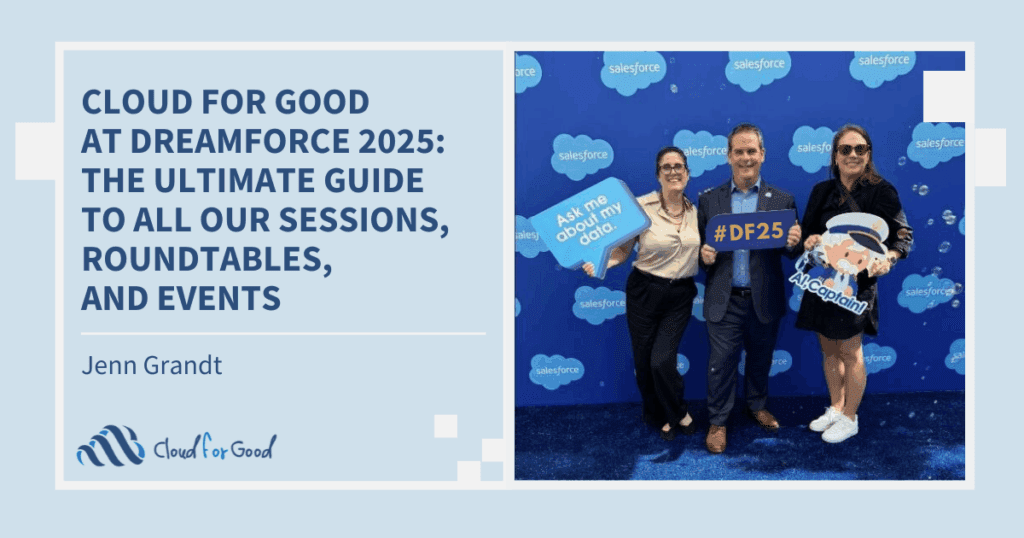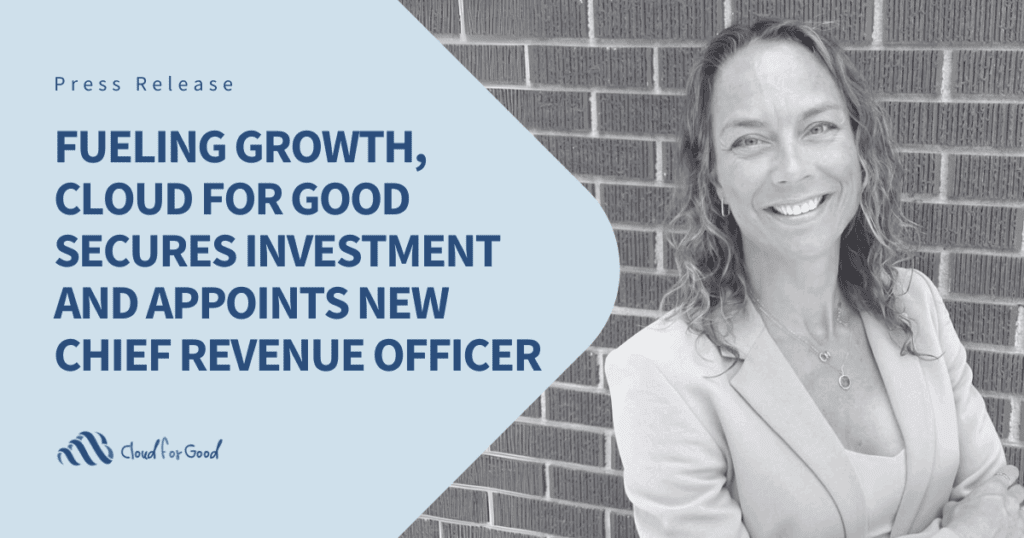Have you ever trained for a race before? Maybe it was an intense race, a half marathon or maybe a 5k charity run. Regardless, you set a goal and developed a plan. Maybe you got friends involved to hold you accountable or made new friends while training. Either way, when you get to race day, you are excited, nervous and ready to tick the checkbox for accomplishing your goal. You make it to the finish line, meet up with friends and family to celebrate and although you are elated, you are already thinking, what’s next? I accomplished my goal, I had fun along the way, but what do I do next?
As a Salesforce consultant, I get to interact with many clients who hit the same ‘what’s next’ question when it comes to the post-implementation of their Salesforce system. So much of their time and resources have been spent moving towards training and preparing. They go-live with their implementation, run across the finish line and are left excited, but also with the question of what do I do now?
Just like a trainer would do for a race, I have outlined a post-implementation training plan for running the Salesforce race. It is an exciting journey when instead of sprints, you get to embrace more slow runs and relaxed guidelines. However, this training program still requires focus and dedication to accomplish your long-term goals.
During the First Two Months
Create Chatter Groups
I always recommend to our clients that they create multiple post-implementation chatter groups in Salesforce.
- Continued Training – I recommend a training group where users can ask questions, watch previous training sessions and have easy access to helpful links and resources, further encouraging user engagement and adoption. This also allows for your team to keep a running list of post-implementation training needs. As you start seeing trends, you can host training office hours to tackle their questions, create training videos of step-by-step walkthroughs or engage in a managed services contract, allowing for continued training support.
- Other Suggestions – I recommend a common place to share potential Salesforce upgrades as your end users start to interact and adopt the system. This can be the addition of a field on the contact record, or a workflow to automatically assign a task after a donation over $5,000 is received. This will allow users to interact with Salesforce in a productive way where they can vote on ideas. When a suggestion receives a certain number of votes, it can go through a review process to potentially be an adopted change within your system. Salesforce is an evolving tool and encouraging users to own the system and ways to improve their processes is a great way to drive user adoption.
Define Your Salesforce Administrator & Resources
It’s common to lose sight of the Salesforce Administrator role during your implementation. But now that your foundation has been laid for using and engaging with Salesforce, you have to define who will own the continued development and deployment in the future. One of the reasons I love Salesforce is because of the endless growth and potential that comes along with releases, third-party applications, different clouds and more. Finding a resource whether that is internal or external who will assist in the continued deployment and development of your Salesforce organization will be an essential part of your training plan moving forward.
Who will be your resource to lead the ongoing deployment of your Salesforce system? For some companies, this is a defined employee who has stepped up into the role of the new Salesforce administrator. For others, this is a new employee, who is a certified Salesforce Administrator. For some still, this is a mix of many roles as the internal team learns to balance priorities. It could also be an external resource, like our Managed Services team who comes in as your Salesforce resource to help you continue to grow and develop your system.
Whatever option you select as a team, I always try to share a job description of a Salesforce Administrator. Here is a great description provided by the Power of Us Hub:
The Salesforce Administrator will lead the ongoing development of our salesforce.com deployment. The successful candidate will have a record of success in improving processes and adoption using the Force.com platform. The administrator will work closely with functional leaders, organizational units, and subject matter experts to identify develop and deploy new business processes including; Fundraising, Marketing, Outreach and our core program business processes. This role is part technical project manager, part administrator and part Salesforce analyst. The Salesforce Administrator will be responsible for the executing on the day-to-day configuration, support, maintenance and improvement of our CRM platform.
Setting your expectations helps everyone better understand what this position is and the added responsibilities it will entail.
Month Three & Beyond
Month three allows you to take a step back and reflect on where you are at and where you want to go. You have taken the time to drive user adoption and engagement while ensuring everyone is well trained and still excited about using your Salesforce system. You also have equipped yourself, whether internally or externally with Salesforce resources to drive continuous deployment and development of your Salesforce org. Here I have provided a high-level outline of items to review internally. You may find that as you start these conversations, you may need external resources to answer these questions Know that our Managed Services team is a great asset for this outline to assist in the analysis and implementation of possible next steps.
Where can we grow?
We help so many nonprofit and higher education institutions who begin their Salesforce journey by implementing the Nonprofit Cloud for one department. They quickly see the value that Salesforce brings and come back for help implementing additional Clouds, whether that’s Marketing Cloud for customized constituent experiences, Community Cloud to increase your constituent engagement or Analytics Cloud to help turn your data into action. So how do you decide where your Salesforce journey will grow? Ask yourself these questions:
- Should we consider additional Salesforce native tools?
Salesforce offers many tools, out-of-the-box, that you may not be using to there full potential.- Cases: A case is a customer’s question or feedback. Support agents can review cases to see how they can deliver better service. Sales reps can use cases to see how they affect the sales process. Responding to cases keeps your customers happy and enhances your brand. Channels include Communities for online forums, Email-to-Case for emails, Web-to-Case for websites, Salesforce Call Center for phone calls, and more.
- Mobile: Take your CRM with you. This can be really helpful for development officers or program staff that is out in the field.
- Record types: Standard use of these is to distinguish between organizations and individuals, or different types of donations but this could go much much further. When integrated with other point & click development you can do so much with Salesforce.
- Should we consider additional Third-Party Applications?
A great place to go to check out your options is the Salesforce AppExchange. Think about the challenge you are trying to solve, like online fundraising or data deduplication, and type it into the search bar. You’ll then be able to filter by the Application’s rating, price, language support and so much more.
Should we consider additional Salesforce Products?
It is so common for organizations to see the impact Salesforce has on one department, who then make the decision to expand their platform by implementing additional Clouds. You can find a breakdown of the products available specifically for Nonprofits or Higher Education Institutions on Salesforce website. Of course, we’re always here should you want to chat about an option. Whether you are a client who has worked with us in the past, or you are just looking to explore the options that Salesforce has to offer.
Where can we improve?
Whenever you implement a new tool or business process, you need to consider both the usability and the scalability of the technology. You want your tools and processes to be able to grow and change with your organization so that you don’t have to keep replacing them every time your organization is in flux. It can be helpful to build an evaluation matrix as new suggestions or asks come up.

Key considerations when building your matrix:
- Bring in all parties involved needed to make an informed decision.
- Include cost: Make sure to include cost considerations for additional salesforce licenses and additional admin support; as well as the cost of the tool. Identify your budget if there a defined limit to the number of hours or dollars that you can spend.
- Prioritize your requirements: Identify what is critical and what is nice to have. Use all of the data you gathered from mapping out the process and interacting with stakeholders during the implementation phase. Include requirements on how the data and process will or will not cross paths with your existing Salesforce data and processes. You may want to include components on data, scalability, and analytics.
- Is there an integration or solution already? Consider reading AppExchange review and reaching out to customers who use them. If no integration exists, think about if you have the expertise to develop it, or if you should engage with a consulting firm.
My favorite part about this post-race, post-implementation training plan is that you do not have to do it alone. Having a team to encourage you, to hold you accountable and to assist you on your journey will always produce better results and make the training more fun. That is why I love our Managed Services team. It is the post-race Salesforce group who comes in to keep the momentum going, to build and train and tackle new steps together and with expertise. No matter where you are at in your post-implementation journey, we can assist you and make sure you hit your next goal and cross the finish line!
You may also enjoy reading:





